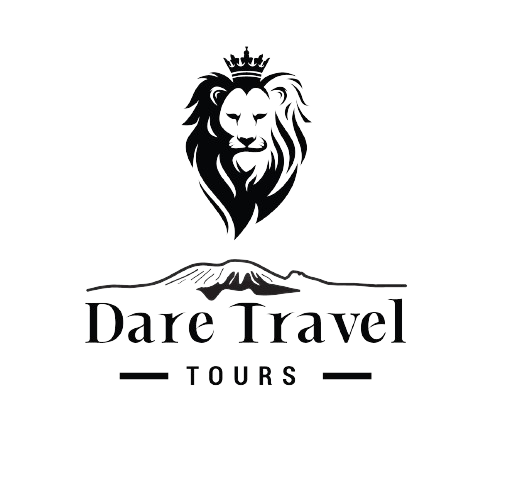Kilimanjaro Routes & Choosing the Best Route for Your Climb
Mount Kilimanjaro offers seven distinct routes to reach the summit, each with its own unique features. Choosing the best route depends on your preferences for scenery, solitude, challenge, and summit success. Here’s a breakdown of each route and what it offers:
1. Northern Circuit Route
- Overview: This route traverses around the entire mountain, offering stunning views and a diverse range of landscapes.
- Best For: Those seeking a less crowded and more scenic route with excellent acclimatization.
- Duration: 9-11 days
- Highlights: Spectacular vistas, unique wilderness, and a high success rate due to gradual ascent.
2. Lemosho Route
- Overview: Approaching from the west, this route provides a beautiful and varied landscape with good acclimatization opportunities.
- Best For: Scenic beauty and acclimatization.
- Duration: 7-8 days
- Highlights: Lemosho is renowned for its incredible views and the variety of landscapes you’ll encounter. It offers a high success rate with a good acclimatization profile.
3. Shira Route
- Overview: A variant of the Lemosho Route, starting from the Shira Plateau.
- Best For: Scenic views and a less crowded alternative to Lemosho.
- Duration: 7 days
- Highlights: Beautiful high-altitude scenery and relatively easy initial trek.
4. Machame Route (“Whiskey” Route)
- Overview: Known for its steep and challenging ascent, this route is popular among climbers.
- Best For: Adventurers looking for a more rugged climb and good acclimatization.
- Duration: 6-7 days
- Highlights: Dramatic landscapes and a high success rate when completed in 7 days.
5. Rongai Route
- Overview: Approaching from the north, this route is quieter and less frequented.
- Best For: Solitude and a more remote wilderness experience.
- Duration: 6-7 days
- Highlights: Peaceful trekking and potential wildlife sightings, though the success rate may be lower compared to other routes.
6. Marangu Route (“Coca-Cola” Route)
- Overview: The oldest and most established route, known for its hut accommodation.
- Best For: Comfort and a more straightforward climb.
- Duration: 5-6 days
- Highlights: Hut-based accommodation and a shorter trek, but often more crowded.
7. Umbwe Route
- Overview: A challenging and steep route that is less popular.
- Best For: Experienced climbers seeking a strenuous and direct ascent.
- Duration: 6 days
- Highlights: Intense climb with fewer trekkers, but higher risk of altitude sickness due to rapid ascent.
Choosing the Best Route
- Highest Success Rate: The Lemosho and Machame routes over 7 or 8 days offer the highest chance of summiting due to excellent acclimatization and a manageable summit night.
- Most Scenic Route: The Lemosho route is renowned for its breathtaking views and diverse landscapes.
- Quietest Route: For those seeking solitude, the Rongai route is the best choice, though it may have a lower success rate.
- Most Challenging Route: For a unique adventure, the Crater Camp option on the Rongai route provides an exceptional experience, albeit with a lower percentage of climbers able to undertake it
Selecting the right route for your Kilimanjaro climb involves weighing various factors. Here’s a summary of each route’s advantages and disadvantages, helping you determine the best fit for your adventure:
1. Machame Route – from USD 2,540
- Advantages:
- Highly recommended with a great success rate.
- Allows “walk high, sleep low” for better acclimatization.
- Stunning scenery through five diverse climatic zones.
- Ascent and descent via different routes.
- Fully catered camping.
- Disadvantages:
- Can be crowded during peak seasons.
2. Lemosho Route – from USD 2,590
- Advantages:
- Excellent success rate with good acclimatization.
- Remote and spectacular approach with dramatic gorges and west Kilimanjaro views.
- Allows “walk high, sleep low”.
- Fully catered camping.
- Disadvantages:
- Higher starting point may impact acclimatization compared to some other routes.
3. Marangu Route – from USD 2,350
- Advantages:
- Shortest route to the summit.
- Dormitory-style accommodation (no camping).
- Disadvantages:
- Less time for acclimatization leading to a lower success rate.
- Less scenic with the same route for ascent and descent.
- Dormitory style can be noisy.
4. Rongai Route – from USD 2,630
- Advantages:
- Only northern approach route, offering a true wilderness experience.
- Very quiet, with fewer climbers.
- Fully catered camping.
- Disadvantages:
- Very tough final summit night.
- Limited natural acclimatization opportunities with no “walk high, sleep low”.
5. Umbwe Route – from USD 2,590
- Advantages:
- Very remote and quiet for the first two days.
- Fully catered camping.
- Disadvantages:
- Steep, short route with poor acclimatization due to rapid ascent.
- Very low success rate.
Key Factors in Choosing the Best Route
-
Acclimatization
- Best Routes: Machame and Lemosho (both allow “walk high, sleep low”).
- Less Effective: Marangu and Rongai (less natural acclimatization opportunities).
-
Difficulty of the Summit Night
- Easier: Machame and Lemosho (reach the crater closer to the summit).
- Tougher: Rongai and Marangu (longer trek to the summit from the crater rim).
-
Crowds
- Least Crowded: Rongai (less traffic compared to southern routes).
- More Popular: Machame and Marangu (more climbers, especially during peak seasons).
-
Accommodation
- Hut-Based: Marangu (no camping, but basic and noisy).
- Camping: All other routes (catered camping).
-
Safety
- Safe Routes: All routes except the Arrow Point route are considered relatively safe if followed sensibly.
-
Summit Success Rate
- Highest Success Rate: Northern Circuit (9 days), Lemosho (8 days), and Machame (7 days).
Summary
- Best Overall: Lemosho and Machame routes for their high success rate and excellent acclimatization.
- Most Scenic: Lemosho for its breathtaking views and diverse landscapes.
- Quietest: Rongai for a more secluded experience.
- Most Challenging: Umbwe and Crater Camp Option for a tough, adventurous climb.
Your choice should align with your priorities for acclimatization, difficulty, solitude, accommodation, and overall adventure.
